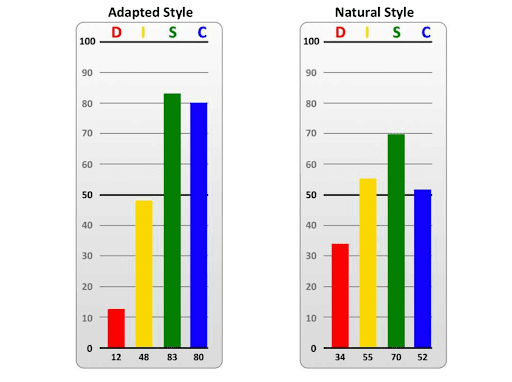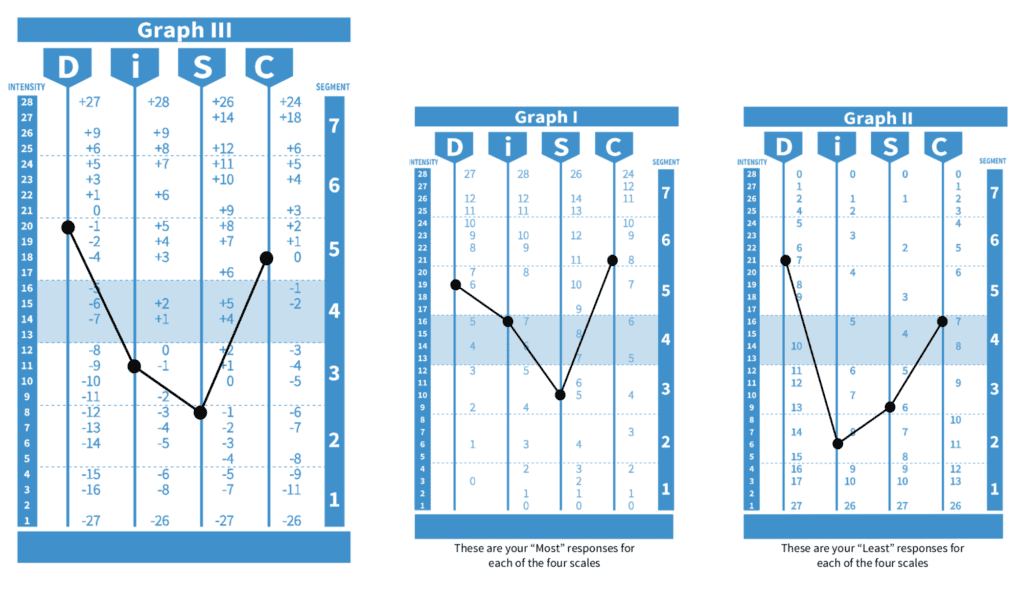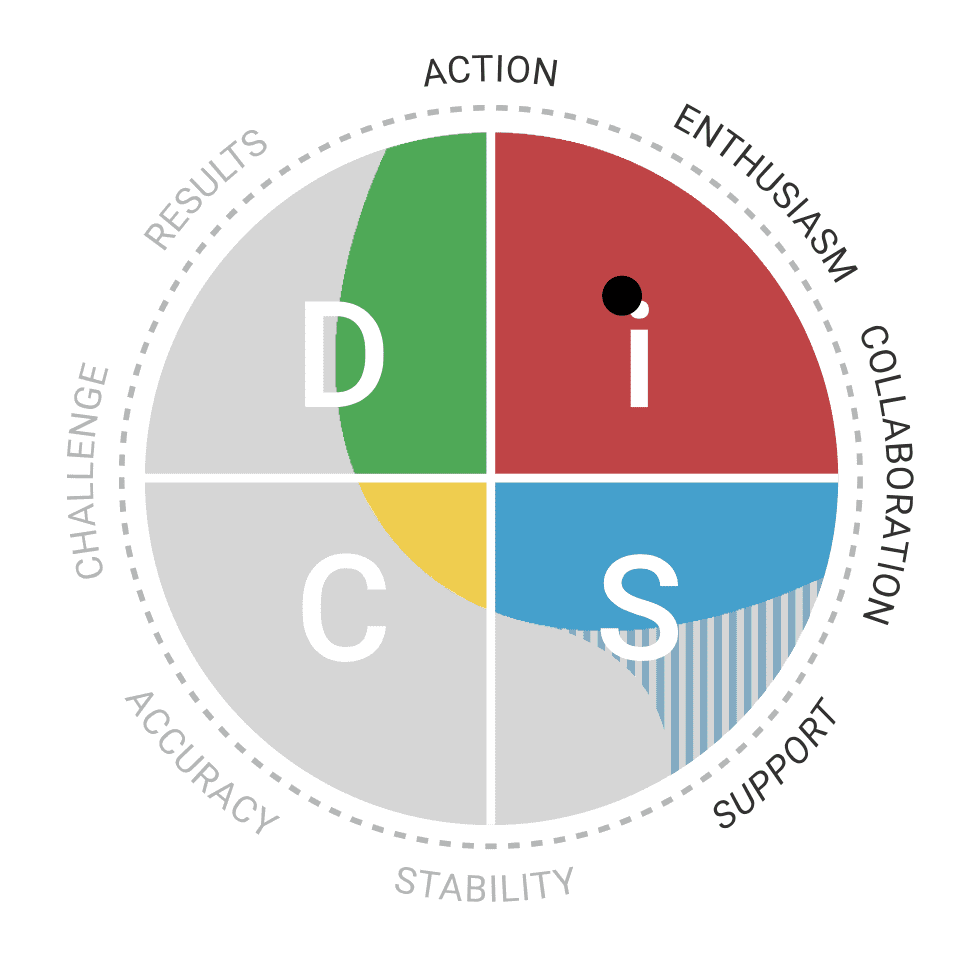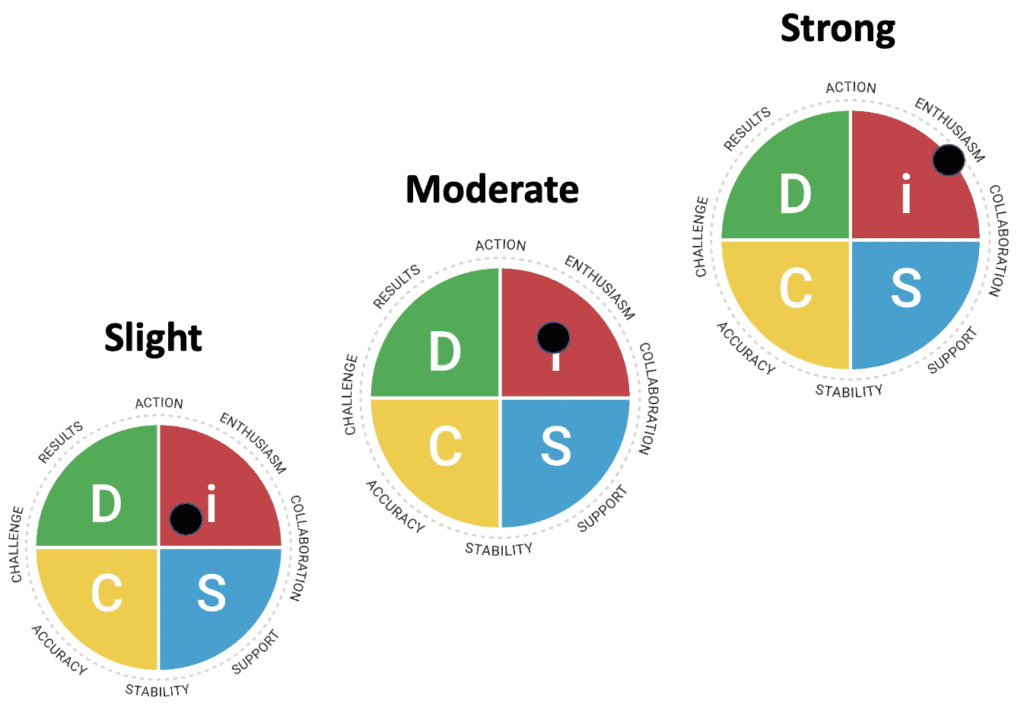Tony Robbins DISC: Compare it to Everything DiSC

Tony Robbins is one of the most known self-help gurus. Through his work, many businesses leaders and individuals have learned about DISC. He has promoted DISC as a way to help anyone grow their career.
So, we had to find out for ourselves how Tony Robbins’ DISC Test compares to the leading DISC-based assessment, Everything DiSC®.
It’s important to state that Tony Robbins offers a free DISC profile (unrelated to Everything DiSC). For the price of your email address, you can receive a DISC report.
In this article, we will only compare the upgraded version of Tony Robbin’s report which is available for $59 dollars. For anyone who only wants to learn what their DISC Style is, the Tony Robbins free assessment is a great place to start.
In this article, we will cover the following:
Tony Robbins DISC Graph and your DISC Style
You might first wonder why there are multiple versions of DISC at all.
The theory of DISC was formulated in the 1920s by William Moulton Marston. However, Marston never created a DISC assessment. It wouldn’t be until the 1970s that the first DISC assessment was created to measure a person’s behavior. A researcher named John Geir at the University of Minnesota took Marston’s theory and used it as a basis for his behavioral assessment.
Geir’s original DiSC test (with the small ‘i’) would eventually become Everything DiSC and is now published by John Wiley & Sons.
Both Tony Robins’s DISC report and Everything DiSC use Marston’s theory to help a person identify their DISC Style. However, each report approaches how this information is portrayed differently. Tony Robbins DISC shows an individual their style based on a bar graph. By comparison, Everything DiSC offers a person their style on a circle graph:

Tony Robbins DISC shows users two bar graphs: Adapted Style and Natural Style.

Everything DiSC shows a person their DiSC Style as a dot on a circle graph:
If both tests use Marston’s DISC theory to help someone understand their personality, how can one test show someone’s style as a bar graph and another one as a dot on a graph?
The answer lies in the history of DISC.
When John Geier created the original paper and pencil DISC test, called the Personal Profile System, the test asked participants 28 forced-choice questions and provided three different graphs to show a person their Personality Style.
Graph I was considered a person’s Public Self (Adapted Style). Graph II was thought to be a person’s Natural Self (Natural Style). Geir’s test had a third graph called Graph III. This graph was a combination of Graph I and II, and it showed a person’s ‘Overall DiSC Style‘.
The common interpretation was that, when using a DISC model that includes two bar graphs or two line graphs, Graph I showed the world who we wanted to be, and Graph II was who we actually were (potentially because it showed our less desirable characteristics).
Geier’s Personal Profile System was very successful. Many different DISC tools follow the original three-graph model today.

Geier’s company went through a number of names and ownerships, and it is now owned by John Wiley & Sons (the publisher of Everything DiSC).
In 2009, Wiley moved away from the 2-graph model entirely. As they made this transition, Wiley wanted to determine if there was any validity to the 2-graph model and if we had distinct personalities depending on what situation we find ourselves in. Wiley conducted two separate studies to understand if this interpretation was valid.
In both studies, they asked participants to complete a DiSC Classic 2.0 assessment which provided a person with a standard line-graph DISC Style (similar to what is used on the Tony Robbins DISC assessment). Then, the participants responded to a series of 20 adjectives and rate how much those adjectives describe themselves.
In the first study, participants were asked to rate themselves based on how others saw them. These results were compared to Graph I on their DiSC Classic 2.0 report.
If Graph I was our public self, then the self-assigned adjectives should match the same adjectives on their DiSC Classic Graph I report.
The opposite, however, was found. The words didn’t match at all.
In the second study, the respondents were asked to recall a recent time when they were under a lot of stress and pressure at work. They were asked to rate how well the list of adjectives described them in those moments.
This study was trying to see if people had a ‘true’ or natural self that was different from their primary graph when they were under pressue.
Again, the participants’ self-rated adjectives didn’t match their DiSC Classic 2.0 Graph II scale scores. Based on this study, there wasn’t evidence that supports that we have different identities that are determined by a particular situation.
So, are DISC tests like Tony Robbins DISC assessment inaccurate?
Short answer – no.
The Tony Robbins DISC test is researched and validated. It’s actually one of the few personality assessments that use a third-party validation process. The publisher of the Tony Robbins DISC assessment (Assessments 24×7) contracted the Assessments Standards Institute to conduct the validation reliability and disparity impact research.
However, the research shows that the combination graph is the best measurement when using DISC for development and training.
When taking either the Everything DiSC or the Tony Robbins test, a learner will receive the same overall DISC Style if you only compare the Tony Robbins combined graph with your Everything DiSC results.
How Everything DiSC Works
When Marston wrote the book Emotions of Normal People and created DISC Theory, he described people as a color wheel. He imagined that while we have a primary color others can identify us as we still have a multitude of colors that make our primary color.
Everything DiSC’s circular graph moved away from the classic graph model to more closely realize Marston’s color-wheel imagery.


When a person receives their DiSC style, it’s shown as a black dot on the map. The location of the dot matters. Someone who has a dot on the outer edge of the map is more aligned with their style than someone who has a dot closer to the center. Essentially, it’s easier for someone with a dot closer to the center to mirror or use the behaviors of other styles.
Additionally, the Everything DiSC Map shows words around the map’s edge. These words are priorities. A person might receive an extra priority in addition to their DiSC Style.
This allows for a person to have both an i-Style and the priority of Accuracy which is more aligned with the C-Style. Everything DiSC measures a person based on 8 DiSC scales, and this measurement results in 32% more accurate and personalized results compared to the previous version, called DiSC Classic 2.0.
How DiSC Improves Self-Awareness
What separates consistently successful people from everyone else? Self-awareness.
Tony Robbins writes how DISC can help any individual become more self-aware and how that trait can fuel success:
Self-awareness is essential to success. If you don’t understand what drives your actions and behaviors, it’s difficult to cultivate positive growth.
As you discover what inspires you, you’ll identify what may hold you back from success, as well as the traits, habits, and behaviors that propel you forward. When you take the DISC assessment, you will learn how to leverage the various aspects of your personality for a life of achievement that aligns with your personal values.
We couldn’t agree more.
To help foster this type of self-awareness, Tony Robbins’ instrument covers the following areas:
- Understanding your DISC Style
- Adapting to situations at
- Work
- Sales and Service
- Social Settings
- Learning Environments
- Summary of your Motivations
The most powerful experience during a DISC workshop or coaching session is when an individual reads about their personal DISC Style story. Often, individuals can’t believe how accurate the results describe them.
Everything DiSC capitalizes on this immediate connection. It follows a similar learning strategy as Tony Robbins, but it leverages an online learning platform called Catalyst.
It carries those insights into other sections, so if learners take the time to engage with this platform, they can practice strategies for using DiSC on an ongoing basis. Rather than just give standardized information on how anyone can connect better with a person who has a D-Style, Everything DiSC will personalize the insights to a person’s particular DiSC Style.
If someone has a D-Style, the way they need to adapt to meet another behavioral style will be different from, say, someone with an S-style.
This personalized strategy is only available in the new learning platform designed specifically for Everything DiSC called Catalyst.
Below is a feature of Catalyst called Comparisons. With the comparisons feature, a learner can compare their own style to co-worker on their own:

Additionally, Everything DiSC leverages this platform to provide different ways to learn about DiSC through videos, podcasts, and interactive elements to bring the content to life.
While you might be reading this article because you are focused on finding a DISC tool to fit your needs, Everything DiSC Catalyst also offers content to help improve emotional intelligence.
